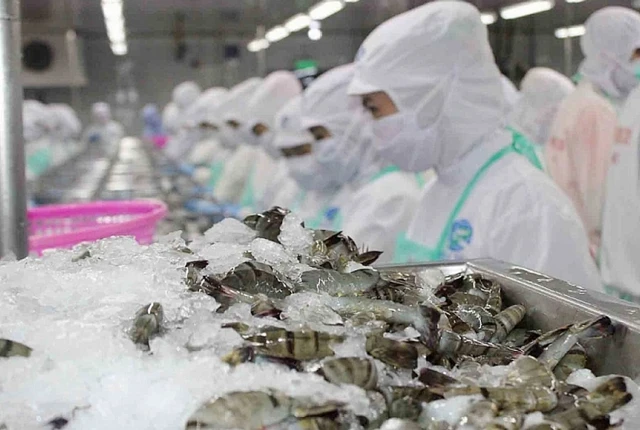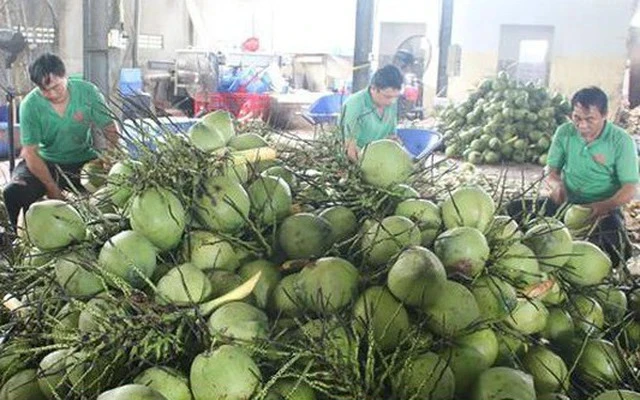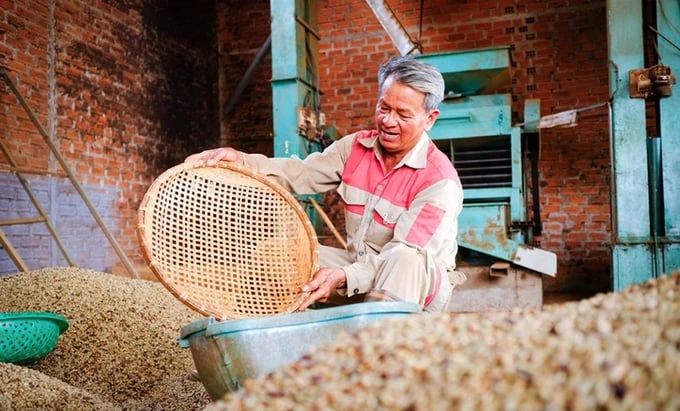(VAN) Many key agricultural products from Lao Cai face obstacles in export due to the lack of planting area codes.
Lao Cai Province, with nearly 200 kilometers of border and three border gates at Lao Cai, Muong Khuong, and Bat Xat, relies heavily on import-export activities. Moreover, Lao Cai is a central hub on the Kunming - Lao Cai - Hanoi - Hai Phong economic corridor.
In the first six months of 2024, the value of goods traded through Lao Cai to China reached USD 1.6 billion, with agricultural exports alone exceeding USD 535 million, including key products like durian, dragon fruit, and watermelon.
Lao Cai benefits from multiple microclimates, which support the cultivation of various crops with competitive advantages. From 2021 to 2030, with a vision towards 2050, Lao Cai's agricultural sector plans to focus on five key crops, one livestock species, and two main areas: pigs, cinnamon, tea, bananas, pineapples, medicinal plants; along with hill and forest economies, and potential sectors such as temperate fruit trees, vegetables, flowers, cold-water fish, and poultry.
Currently, Lao Cai has over 60,000 hectares of cinnamon plantations, primarily exported to China. Almost 100% of Lao Cai's cinnamon essential oil is exported to China, along with other products like medicinal herbs, cardamom, amomum, tea, and bananas.
However, the main challenge now is that China has been tightening its regulations and standards for imported goods.
According to Nguyen Quang Vinh, Deputy Director of Lao Cai's Department of Agriculture and Rural Development, when China had yet to install border fences and impose stringent requirements, Lao Cai could export both officially and through small cross-border routes. Since 2021, however, China has raised the bar for product quality, requiring planting area codes, and ensuring that cultivation and harvesting processes meet food safety standards, which has led to the cessation of exports through unofficial border crossings.
As a result, cooperatives and farmers in Lao Cai are facing increasing difficulties in exporting agricultural products to China. This explains the challenges in exporting Lao Cai's agricultural products despite their strong potential.
Meanwhile, China has increasingly stringent requirements regarding standards for agricultural products, with frequent changes that have caused certain difficulties for localities and export businesses in updating information and implementing regulations.
In particular, the planting area codes for product traceability are a necessary and mandatory condition for challenging export markets, including China.
According to the Lao Cai Provincial Department of Crop Production and Plant Protection, the issuance of planting area codes is a new initiative, so the awareness of some entities is still limited. The management of planting area codes faces difficulties due to the lack of allocated funds, equipment for regular inspection and monitoring, and the absence of digital technology in managing raw material areas.
The complex mountainous terrain and difficult transportation, especially in remote areas, pose challenges for communication and inspection.
Some of Lao Cai's key export sectors currently have significant export potential but are not yet included in the protocol and Orders 248 and 249 from China, such as pineapples and medicinal herbs. The cinnamon sector, which has a large production area, still lacks strict control over planting areas and specific guidelines for issuing planting area codes for cinnamon trees. Therefore, although some localities have requested planting area codes for cinnamon, implementation has been delayed due to the lack of guidelines.
As for bananas in Lao Cai, the Panama disease and the Covid-19 pandemic have led to unstable product consumption, affecting the livelihoods of producers and the maintenance and expansion of plantation areas.
Currently, many businesses in Lao Cai still face difficulties and obstacles in obtaining planting area codes. Some localities and businesses have only focused on the size of the planting area and packaging facilities without strictly adhering to the import country's requirements.
In 2023, Lao Cai province maintained 13 planting areas that met export standards, and 7 packaging facilities serving exports were granted codes. Upon inspection and monitoring, the province revoked the codes of 3 planting areas that did not meet the required standards for export, as well as the codes of 4 packaging facilities that failed to meet the necessary requirements.








